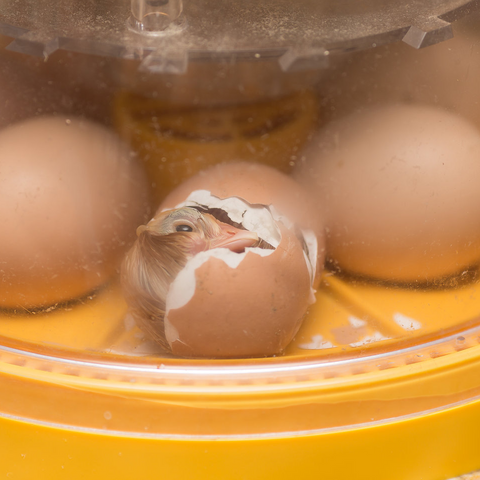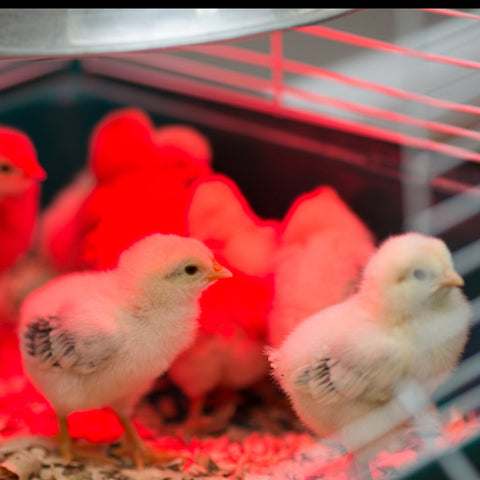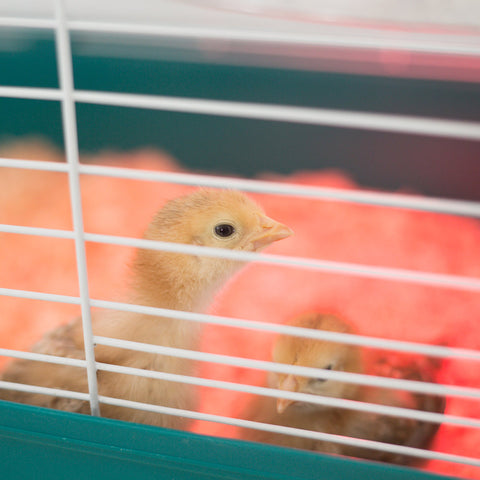There's so much to learn from such a unique experience, from their "egg tooth," to their first feathers, to playful personality changes!
Hatching chicks, much like raising chickens requires the right supplies. With the right information and supplies, hatching and raising chicks can be a joy.

HATCHING
The two most important factors in determining whether you'll have a successful hatch are the quality of the incubator and the quality of the eggs.
The best incubator on the market with the most successful hatch rate for hatching a small batch of eggs is the Brinsea Mini Advance incubator. Like many of the best products in a category, it is quite expensive. With good quality eggs, the hatch rate is around 80%. This incubator turns the eggs for you, keep the perfect temperature and the perfect humidity. All you have to do it add water every couple of days. Making your own incubator or purchasing a low quality incubator often results in a hatch rate between 0 and 25%.
Eggs: There are many factors that go into making the most fertile egg. This includes the ratio of roosters to hens, stress level of mother hens, how old the eggs are, how far they've traveled, the temperature they're stored at and even the type of food and the cleanliness of the hens' living conditions. There are many places to get fertile eggs including Craigslist, your local farmer and online. Each source has it's advantages and disadvantages. It is especially important to find good quality fertile eggs in an educational setting. It is quite a letdown for a student to wait 21 days for an egg to hatch only to find out that something went wrong.

SUPPLIES
Once your chicks have hatched or you've decided to purchase chicks from the store, your most important decisions now lie in which supplies you choose to help raise the chicks. Your choices will make the difference between a clean smelling cage with little work and a smelly cage and chores you'll need to do 2-3 times per day.
The necessary supplies include:
A brooder (A cage where the chicks will live), a heat source, a waterer and a feeder, bedding and food.
There are many options for brooders but the most important thing to remember is that for the first 4 weeks of their lives, chicks double in size every week. The correct amount of space for 6 chicks that are 1 week old is vastly different from the amount of space the six 2 week old chicks need. Go with a larger sized brooder than you think you'll need. Each chick needs at least 6 square inches for every week of the chick's age. Do not use a brooder with wire on the bottom for chicks under 4 weeks. The best bedding is pine shavings.

Heat source - For years the common heat source for chicks has been a heat lamp and heat bulb. Although these are the current standard, they do include a very a small rise of fire. In the past couple of years a new style of heater has become available. This new style if basically fire proof which is one less thing to worry about. These are called brooder plates. They are easily to adjust depending on the age and height of your chicks.
Water and feed bowls. There are many different versions and we have tested them all. The best waterers are those that baby chicks can not drown in. The water reservoir needs to be as small as possible. The other consideration is if bedding and feces can get into the water bowl. To cut down on debris getting into the waterer and feeder, you can put them on stands. 1 inch high for every week old the chicks are. The new type of waterer that has solved most of these problems is a nipple waterer with nipples on the side of the bucket. No bedding or debris can get in to the container and neither can any chicks. These only work for chicks ages 10 days and above so you'll need to use the conventional waterer for chicks under 10 days old. At 10 days, the chicks are strong enough to peck at the nipples.














